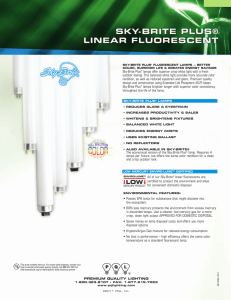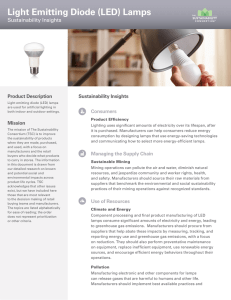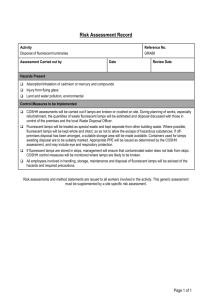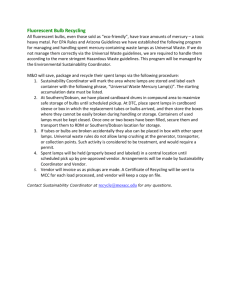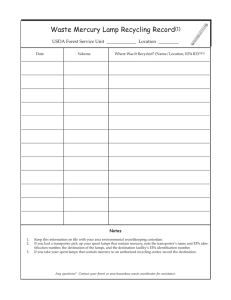Fluorescent Lamps - The Sustainability Consortium
advertisement
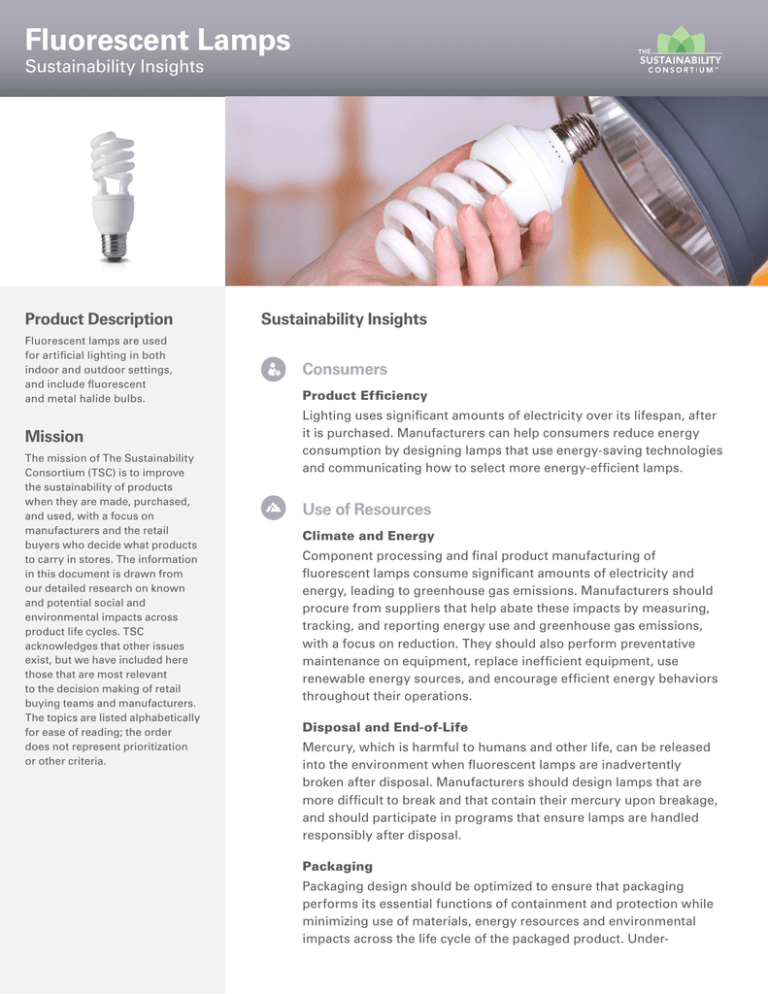
Fluorescent Lamps Sustainability Insights Product Description Sustainability Insights Fluorescent lamps are used for artificial lighting in both indoor and outdoor settings, and include fluorescent and metal halide bulbs. Consumers Mission Lighting uses significant amounts of electricity over its lifespan, after it is purchased. Manufacturers can help consumers reduce energy consumption by designing lamps that use energy-saving technologies and communicating how to select more energy-efficient lamps. The mission of The Sustainability Consortium (TSC) is to improve the sustainability of products when they are made, purchased, and used, with a focus on manufacturers and the retail buyers who decide what products to carry in stores. The information in this document is drawn from our detailed research on known and potential social and environmental impacts across product life cycles. TSC acknowledges that other issues exist, but we have included here those that are most relevant to the decision making of retail buying teams and manufacturers. The topics are listed alphabetically for ease of reading; the order does not represent prioritization or other criteria. Product Efficiency Use of Resources Climate and Energy Component processing and final product manufacturing of fluorescent lamps consume significant amounts of electricity and energy, leading to greenhouse gas emissions. Manufacturers should procure from suppliers that help abate these impacts by measuring, tracking, and reporting energy use and greenhouse gas emissions, with a focus on reduction. They should also perform preventative maintenance on equipment, replace inefficient equipment, use renewable energy sources, and encourage efficient energy behaviors throughout their operations. Disposal and End-of-Life Mercury, which is harmful to humans and other life, can be released into the environment when fluorescent lamps are inadvertently broken after disposal. Manufacturers should design lamps that are more difficult to break and that contain their mercury upon breakage, and should participate in programs that ensure lamps are handled responsibly after disposal. Packaging Packaging design should be optimized to ensure that packaging performs its essential functions of containment and protection while minimizing use of materials, energy resources and environmental impacts across the life cycle of the packaged product. Under- packaging and over-packaging can both lead to increased impacts. These impacts may be mitigated by using more energy-efficient manufacturing, selecting recyclable and sustainably managed renewable materials, and encouraging consumer recycling. Pollution Producing mercury and manufacturing electronic components for fluorescent lamps can release gases that are harmful to humans and other life. Manufacturers should implement best available practices and technology to abate the release of pollutants. They should also design products that are durable and use recycled and recyclable components to avoid the need for new materials. Workers and Communities Conflict Minerals Fluorescent lamps may contain minerals, including gold and ores of tantalum, tin, and tungsten, that are mined in places where groups responsible for human rights abuses control and profit from mining operations. Manufacturers should ensure that materials in their products are sourced responsibly and are not from these areas, and should try to help improve stability and quality of life for miners and their communities. Workers Manufacturing fluorescent lamps and transporting and recycling lamps after disposal may expose workers to toxic mercury. Manufacturers should use best available practices and technologies to mitigate exposure, monitor worker health and safety, reduce the use of mercury where possible, and participate in responsible stewardship programs for safe disposal. TSC is jointly administered by Arizona State University and the University of Arkansas © 2016 Arizona State University and University of Arkansas For more information about our suite of products please visit: www.sustainabilityconsortium.org/what-we-offer


